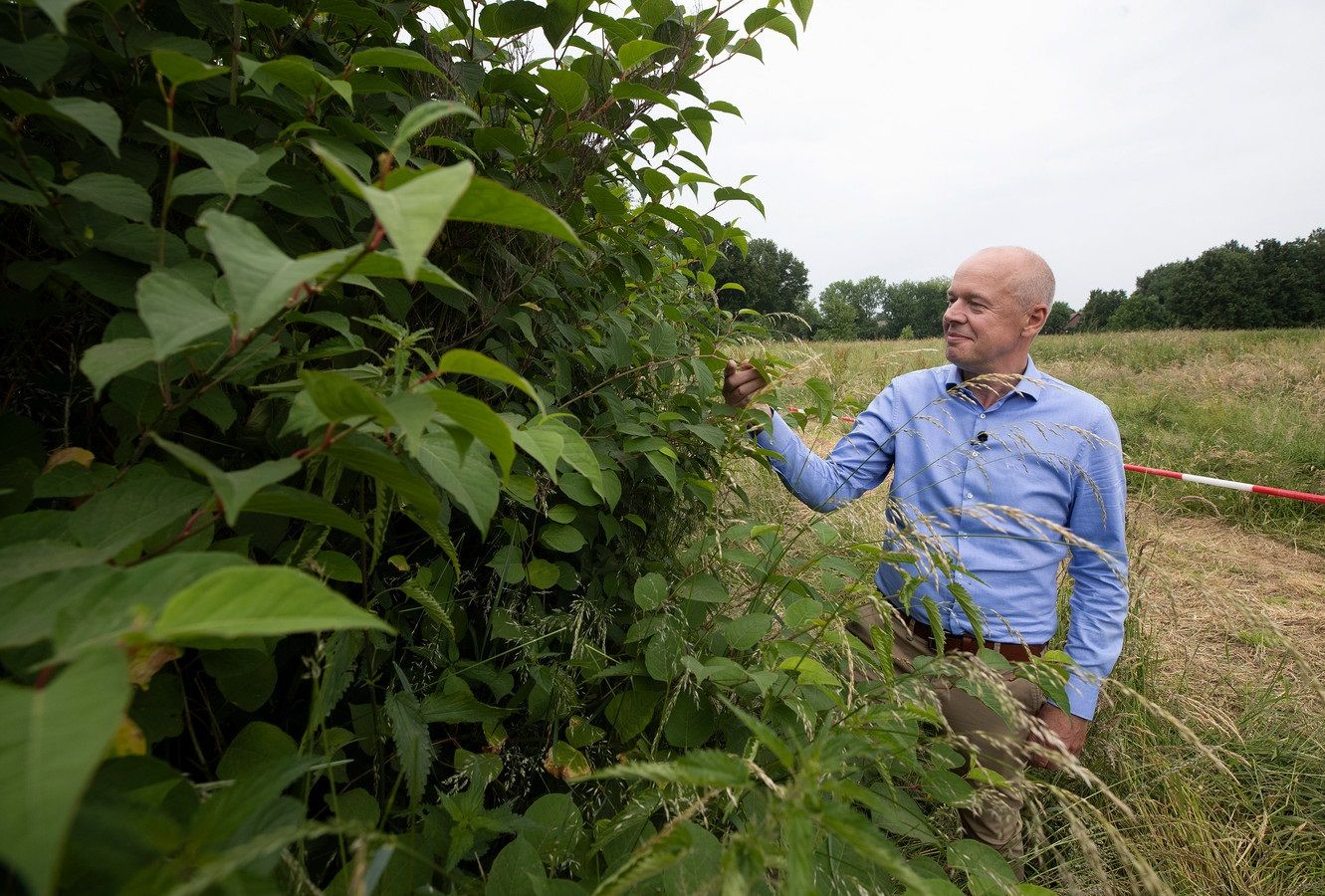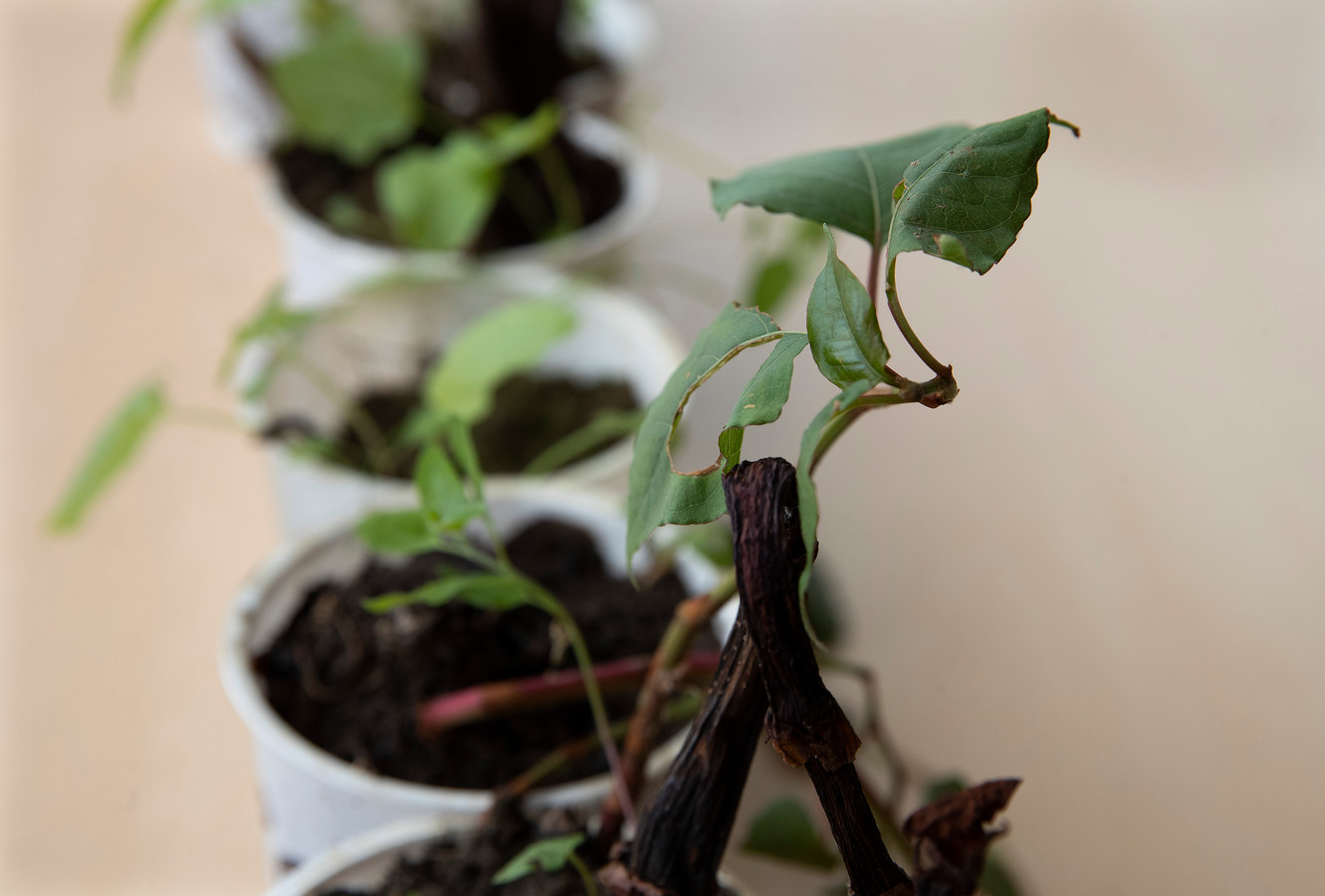How to deal with the Japanese knotweed nightmare?
This Achterhoek-based company has the solution: freezing temperatures!
Source: Gelderlander (Translated from Dutch)
ULFT/GENDRINGEN – The Japanese knotweed is a nuisance for those who have it in their gardens or on their property. Mowing, burning, and using pesticides have little effect on the plant, and it continues to spread. The Ulft-based Technical Innovation Bureau Achterhoek (Tibach) has come up with a solution: freezing. The first test setup is already operational in Gendringen.
At first glance, the Japanese knotweed may appear unremarkable, but those who encounter it can experience significant damage and disruption. These plants possess tremendous growth power, capable of causing harm to buildings, roads, sewage systems, and even compromising the stability of riverbanks and flood defenses. Moreover, the knotweed grows rapidly, up to twenty centimeters per day under optimal conditions.
Spreading
Keeping the plant in check by mowing is an option, but it doesn’t eliminate the problem. In fact, by spreading the cuttings through activities like tractor tires or clinging to clothing, the plant can spread even further. Experiments with injecting hot water or electrocution have shown some results, but the plant doesn’t disappear completely. The same applies to the application of the herbicide glyphosate.
Actually, digging up the plants and burning them has been the only method that truly works so far. However, it is very expensive. The soil must be excavated to a depth where all the roots are removed, and all the excavated soil must be disposed of.
“The Japanese knotweed grows very rapidly, up to twenty centimeters per day under optimal conditions..”
To permanently treat the plant, Tibach has developed a new, environmentally friendly method that kills the Japanese knotweed through freezing. A pilot project is currently underway in Gendringen. The company anticipates launching the machine on the market next spring.
Director André Evers of Tibach came up with the idea when he, as a board member of both Scouting Gendringen and Clubgreenup, was confronted with the Japanese knotweed. Clubgreenup focuses on developing new nature on vacant land and was working on planting a food forest on the scouting grounds. “Until then, I actually knew very little about the plant,” he says. “I reported to the municipality that there was Japanese knotweed and started to delve deeper into it. But I couldn’t find many better solutions than manually removing the plants, so I started to come up with something myself.”
Freezing temperatures
Evers noticed that the plant starts turning brown and retreats underground as early as September or October. He dug up some roots and placed them in his home freezer. “It seemed to work, after a while in the freezing cold, the plant was truly dead,” he said.
He then went to the agricultural university in Wageningen with his findings and conducted further research. “It turned out that the plant does not survive at temperatures of approximately -5 degrees Celsius”he said.
“It turned out that the plant does not survive at temperatures of approximately -5 degrees Celsius”
The challenge then was to figure out how to reach a depth of one meter in the ground with that cold temperature. For this purpose, a cooling machine, mostly powered by solar panels, was placed inside a container. From there, a pump transports a coolant through a long hose that ultimately reaches a freezing pipe. Multiple freezing pipes are placed in the ground, between the roots of the Japanese knotweed, causing it to freeze and eventually die off.
With the current machine, Tibach can kill the Japanese knotweed on an area of about twelve square meters in five to seven days. The roots remain in the ground and will slowly decompose over time.
The advantage of this method, as mentioned by Councilor Ria Ankersmit from the municipality of Oude IJsselstreek, is that it provides a one-time treatment that permanently removes the plant. “The Japanese knotweed pushes everything aside,” she says. “It causes a lot of damage to roads, sewers, and so on. Currently, all we can do is mow and remove the above-ground parts, but underground, the plant continues to grow, and the problem becomes more and more severe. It requires a tremendous amount of work and money, and it will only increase in the future.”
Besparing
In Oude IJsselstreek alone, the plant is reported to occur in at least 75 locations. The municipality spends 60,000 euros per year on treating the Japanese knotweed. Due to the plant’s rapid spread, this cost is projected to increase to around 137,000 euros in ten years.
Tibach could eradicate the plant in the municipality within three years, resulting in a savings of around sixty percent. “That is also one of the reasons why we, as a municipality, have invested in this idea,” says Ankersmit. “Costs come before benefits. Ultimately, this will save us money.”
During the presentation of the system in Gendringen on Thursday, representatives from the Port of Rotterdam and several water authorities were among the interested audience. However, the method is not only interesting for businesses and governments, according to Evers. “We are also working on a refrigerator-sized model intended for individuals. It would be great if you could eventually rent it from a rental company like Boels.”



